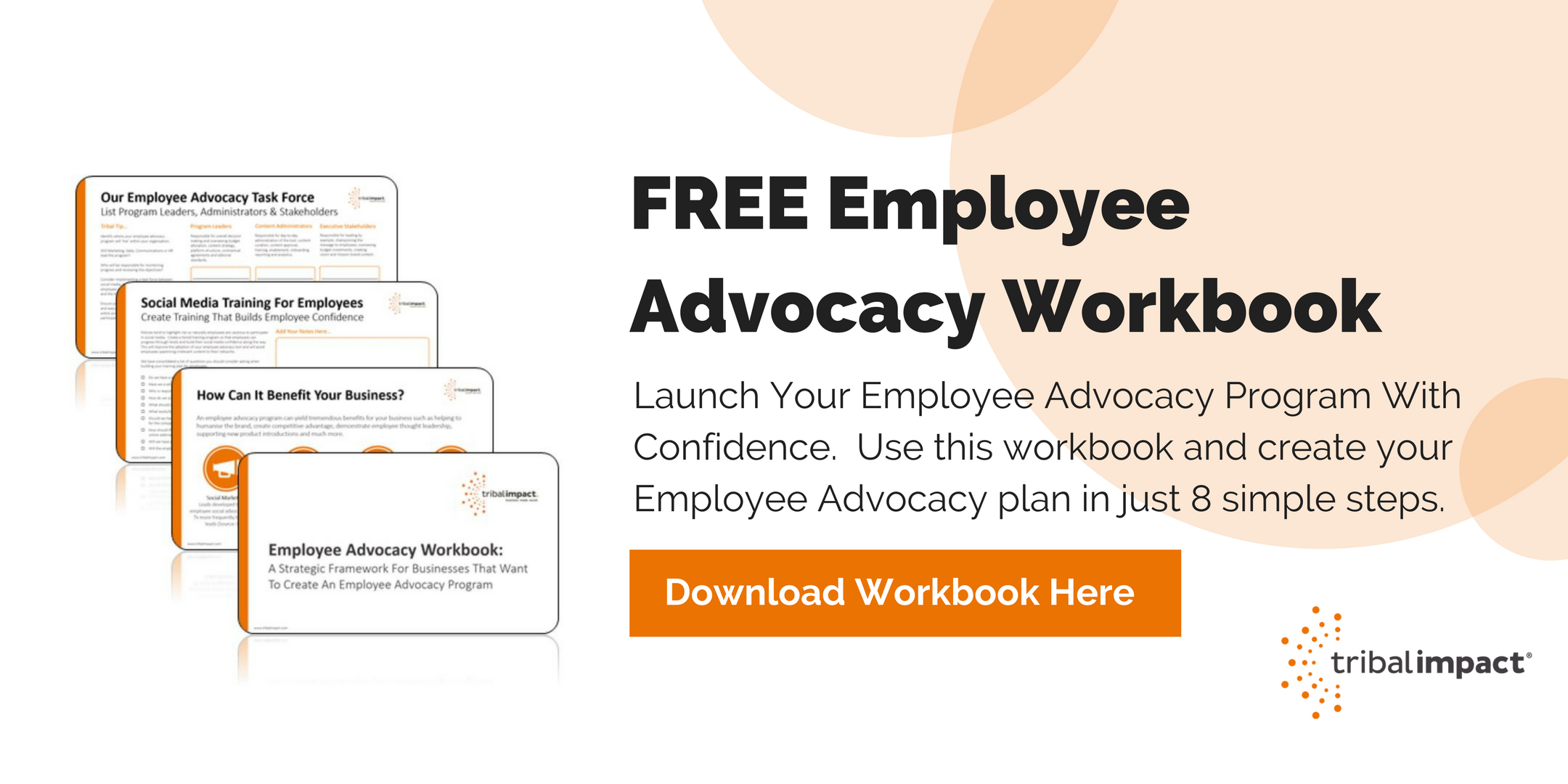Dinner time in our household is pretty noisy, messy and not all that peaceful but last night I figured it was time I started talking to the girls about the real world. What’s going on outside our little bubble.
We talked about the recent avalanche tragedy in Italy and the inauguration of President Trump. Awkward, only because the mention of the word “trump” normally results in our girls collapsing in fits of giggles.
I scaled back the explanation considerably from “he’s the new leader of the free world and President of the United States of America” to “you know your keyworker at school? Well, Trump is a bit like the top keyworker for all other keyworkers”.
I think they get it…just.
Kids need simple explanations. When they understand, they get curious and start asking questions. When they ask questions, they’re engaged. They want to learn. It opened my eyes.
Engagement Is The Key Driver With Employee Advocacy
Without engagement, you will get “what, more training?” – cue eyes rolling in dismay. Sometimes you hear “not another tool!” usually preceded by a tutting sound and sharp head tilt. The most common of all? “I don’t have time for this”.
I’ve heard it all. I get it.
The solution? Context.
Context is everything. If you can’t answer the question “what’s in it for me?” from an employee perspective, you’re probably not ready for employee advocacy.
Employees need to be emotionally connected to your employee advocacy program as much as they’re emotionally connected to your brand.
If employee advocacy is introduced to streamline internal communications, to boost marketing impressions or provide a content hub for social selling then you’re coming at it from the wrong perspective.
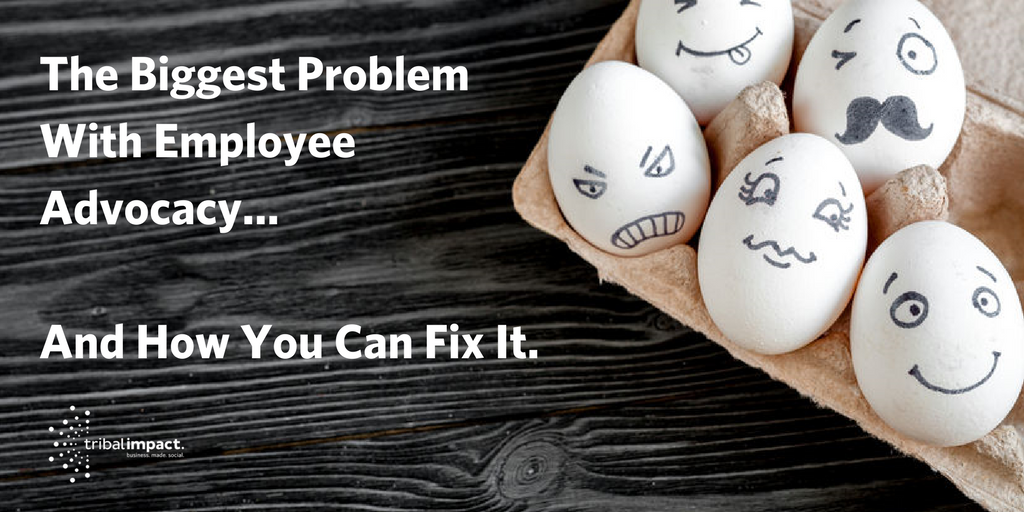
Employee Advocacy Starts With The Employee
Imagine a pyramid - top down. The brand creates content. Content is cascaded to employees. The masses shall share on social media. No. The biggest employee advocacy problems are that no employee wants to be used as an amplification vehicle for marketing content unless it’s relevant to their network and interesting to read.
Now turn that pyramid upside down. Employees (the masses) are now at the top of the pyramid. The brand now supports the creation of lots of individual expert-led content. Authentic employee voices that can explain the brand story in their own words and how they contribute to it.
So, ask yourself these questions:
- How will employee advocacy help your employees?
- What will they gain from getting involved?
- The benefits in helping them do their job better?
- Will it support their next career move?
- What’s their role within the program?
- How can they progress through the program?
- What training will they receive?
- Does their direct manager understand the value of the program?
- In what ways will the business encourage their participation?
I’m not naive. A business leader may feel this looks a bit one-sided. This isn’t going to generate revenue or decrease costs. Wrong.
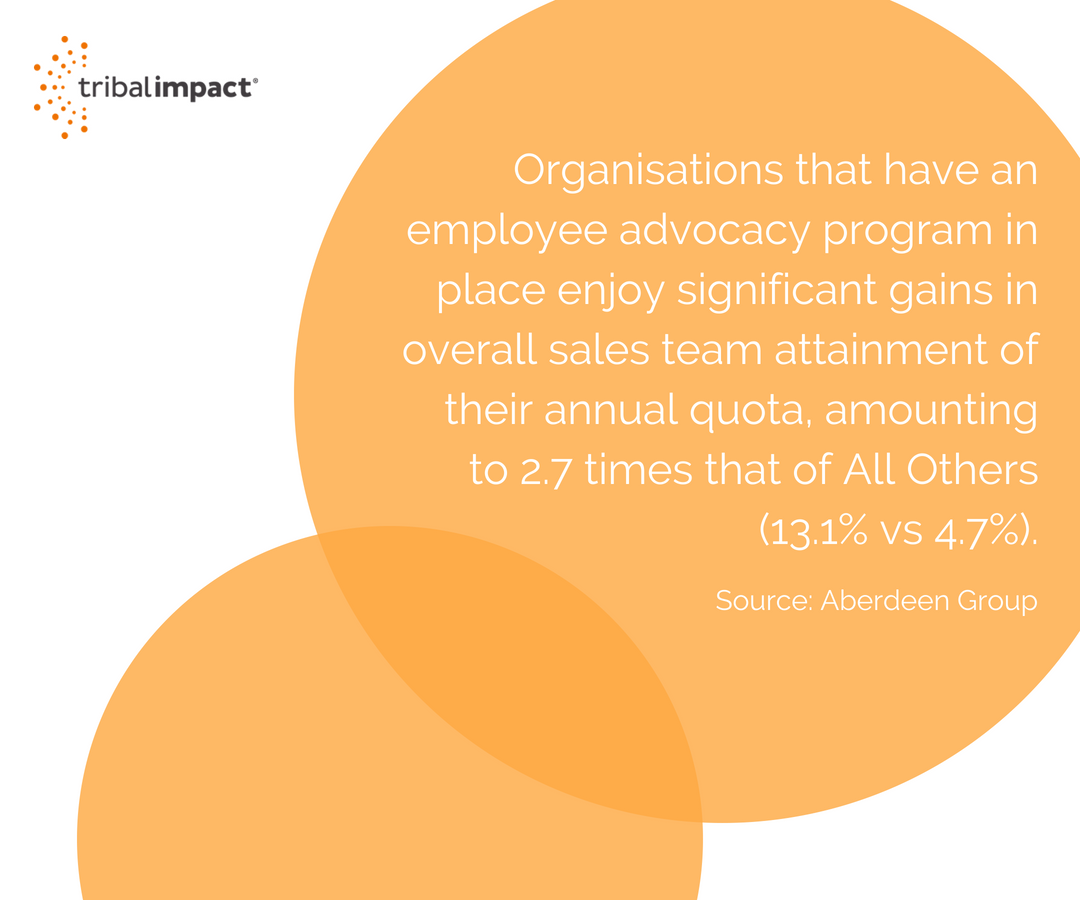
According to Aberdeen Group, companies with an employee advocacy program report a 26% increase in year over year revenue.
Further data shows that organisational revenue that comes from customer referrals soars to levels that are more than three times greater than organisations who do not have an employee advocacy program in place. (15.1% vs 4.6%).
Finally, organisations that have an employee advocacy program in place enjoy significant gains in overall sales team attainment of their annual quota, amounting to 2.7 times that of All Others (13.1% vs 4.7%)
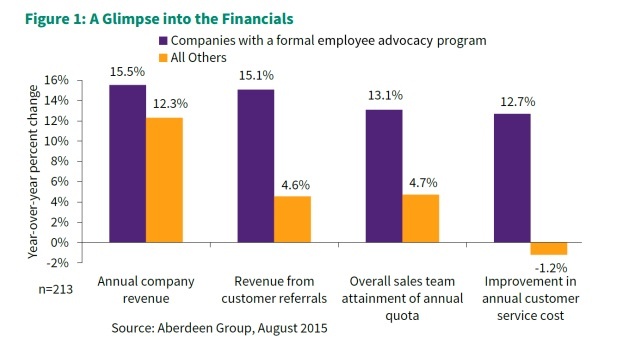
But Does Employee Advocacy Drive Employee Engagement?
A recent report from Altimeter, a Prophet company, discovered that employee advocacy does, in fact, drive employee engagement.
When employees were asked how they felt after sharing work-related content, the leading response was “I feel more connected and enthusiastic about the company I work for” followed by “I better understand my employer’s business”.
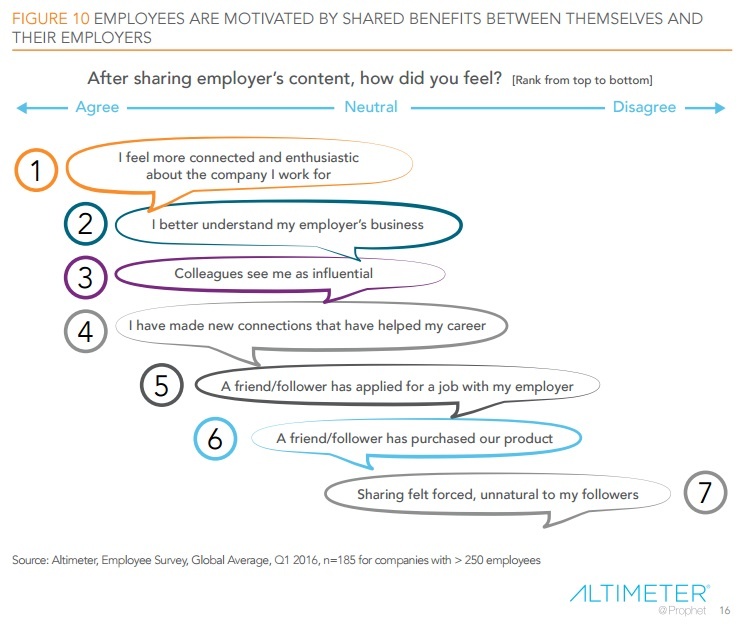
There is no doubt in my mind that a connected workforce contributes towards an engaged workforce. This advocacy approach goes way beyond the silos of sales, marketing, communications and HR.
The collective employee brand is fast becoming more powerful than the carefully orchestrated business brand.
Organisations must embrace social networking as a way to connect all relationships across the business including their employees, customers, prospective customers, suppliers, partner, future employees and leaders.
After all, a connected business is a truly social business.
What do you think? As an employee, would you advocate your employer's brand? What would motivate you to become a brand ambassador?
Related Post: 6 Reasons Why Your Employee's Aren't Advocating Your Brand on Social Media

